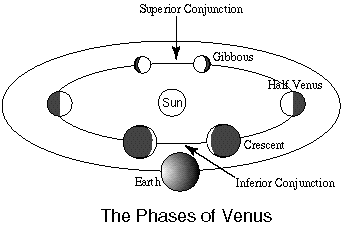I had dinner with someone who has a 4" reflector with less than stellar optical performance. One of the reasons why refracting telescopes tend to outperform reflectors of the same aperture is intrinsic to the refracting scheme. But another advantage of the refractor is that once the objective lens is mounted in its cell, and the cell on the tube, there is little that needs adjusting. Reflectors often require an adjustment called "collimation." This gets the optical axis of the primary mirror aligned with the diagonal mirror and the eyepiece tube. A benefit is that fuzzy little discs often turn into a very detailed images!
This is the hard way to do it, without a laser collimator:
Simpler way, but not quite as perfect:
1. Find a 35mm lens can (you still have one in the attic, right?)
2. Drill a very tiny hole in the center of the cap. Use a ruler to be sure it is centered. Larger hole in the bottom of the can.
3. Put in the 1 1/4" eyepiece focuser. It just fits. Remove it.
4. Look through the eyepiece focuser, and make sure the diagonal is fully visible as a circle.
5. Adjust the screws on the diagonal holder until you see the entire disc of the primary mirror in the diagonal, and not the interior of the tube unless it is symmetrical around the primary mirror..
6. Put the 35mm lens cap in the focuser tube.
7. If the diagonal mirror is centered in the primary mirror through that tiny hole, you are done.
8. If not exactly centered, turn the adjustment screws (usually three) on the back of the mirror cell until everything is centered. Relatively small turns of these screws should do the job. (Some mirror cells have nuts that lock the screw in position once you have everything in place. You may want to loosen these first.)
And with a laser collimator, which is far easier:
The more you move a reflector around, the more often it will require collimation. Big Bertha gets it every month or so. If you want a crisp, high contrast image, buy one of the laser collimators, or persuade someone you know with one to come on over. You will likely be amazed at the difference.
Laser collimation should be done in a fairly dark room. I do it in the telescope garage in the hour before the sun sets. The reason you want a dark room is that the first try may have the laser beam reflecting off the primary mirror and completely missing the diagonal mirror. Seeing where it has ended up simplifies adjusting the mirror screws to hit the diagonal.
I just collimated Big Bertha and if you collimate your mirror you will almost certainly need to realign your finder with the main scope: your optical axis is now pointing a new and more correct direction.
Once Jupiter appeared, the difference was obvious: higher contrast and more detail. Venus also improved from a fuzzy blob to a clearly recognizable gibbous image.
That gibbous phase was one of the early proofs of heliocentrism. See this diagram that shows why:
Venus has to be on the far side of the Sun from us to be gibbous.
Conservative. Idaho. Software engineer. Historian. Trying to prevent Idiocracy from becoming a documentary.
Email complaints/requests about copyright infringement to clayton @ claytoncramer.com. Reminder: the last copyright troll that bothered me went bankrupt.
Wednesday, June 6, 2018
Subscribe to:
Post Comments (Atom)

"2. Drill a very tiny hole in the cap."
ReplyDeleteWhere in the cap? One would guess in the exact center, but that isn't stated.
(Not that I'm ever going to do this, but the gap in the directions irks me.)